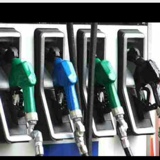Information
-
Inspecting Officer
-
Inspecting officer Telephone number
-
Conducted on
-
Inspection type?
-
Type of monitoring system
-
Location
-
PVR Stage I System Design Requirements
The system must minimise petrol vapour emissions when the specified number of delivery tanker compartments are discharged at the same time.
Petrol storage tank vent pipes must be fitted with a pressure vacuum relief valve
The pressure vacuum relief valve must only open outwards in the vent of a potentially hazardous pressurisation and open inwards to allow air to enter when fuel is being dispensed.
As an alternative to the pressure relief valve an orifice vent device may be fitted to balance storage tank vapour pressure to atmospheric pressure
1. Operator details
-
Contact name
-
Installation name
-
Address
-
Telephone number
-
Permit number
2. General
-
Ensure effective preventative maintenance by following a schedule of maintenance and having spares and consumables available without delay
Test vent and vapour return lines in accordance with the maintenance schedule
Pressure vacuum relief valves or other similar devices on the petrol storage tank vents are checked for correct functioning, seating and corrosion AT LEAST once every 3 years -
Olfactory assessment on site and beyond the boundary
-
Manual ullage check satisfactory
-
Manual ullage check system in use e.g. Veeder Root
-
Tank integrity satisfactory
-
Integrity check details e.g. Who? Frequency?
-
EMIGMA data satisfactory
-
Annual throughput
-
Photographs (if applicable)
3. Training documentation
-
Provide sufficient training and practical instruction for service station staff to enable them to use (or supervise the use of) and maintain the petrol vapour protection controls where required; and also in the actions to take in the event of a petrol vapour leak e.g. Undue petrol odour; chattering pressure vacuum relief valve.
-
Are the training procedures on site?
-
Comments
-
Copies of competent persons certificate for all relevant staff of sufficient knowledge for DCD staff?
-
Comments
-
Are staff trained in all the relevant stage II operational procedures?
-
Comments
-
Photographs (if applicable)
4. Document Inspection
-
Is there a logbook / site register on site?
-
Which vapour recovery certificates are on site?
- Phase 1 Vapour Extraction
- Phase 2 Vapour Extraction
-
Are they in date?
-
Comments
-
Photographs (if applicable)
5. Stage II documentation
-
Maintain a logbook to record details of: installation, maintenance and repairs of all PVR systems; examination & testing; petrol inventory, deliveries & throughputs; training given to staff; instances of vapour lock; and any suspected and actual vapour or petrol leaks / spill ages & action subsequently taken
-
Manual - are the weekly checks being carried out?
-
Manual - Are faults being recorded and reported?
-
Manual - Are repairs carried out within 7 days?
-
Active with auto-monitoring Faults in the monitoring system recorded and reported within 7 days?
-
Active without auto-monitoring faults recorded and reported within 7 days?
-
Are the installation certificates on site?
-
Comments regarding stage II documentation
-
Photographs (if applicable)
6. Site inspection Stage I controls
-
Is the relief valve seated?
-
Are the tank/ vents correctly connected and labelled?
-
Is the correct signage attached to the VRS connection?
-
Are all the seals to the caps in good repair?
-
Are all the connection points capped and locked?
-
Is the poppit valve and seal in good working order?
-
For DCD, is the DCD box in good working order?
-
Interceptors - are they clear? Any sign of spillage?
-
Comments regarding stage I controls
-
Photographs (if applicable)
7. Stage II Controls
-
Are all pumps in working order at time of inspection?
-
Active - is the monitoring system in good working order?
-
Manual - whistle or gauge in good working order at time of inspection?
-
Comments regarding stage II controls
-
Photographs (if applicable)
8. Compliance details
-
Risk assessed at time of visit
-
Overall compliance with the permit
-
Action required by operator
-
Signature of inspecting officer
-
Signature of Operator contact (present at inspection)














